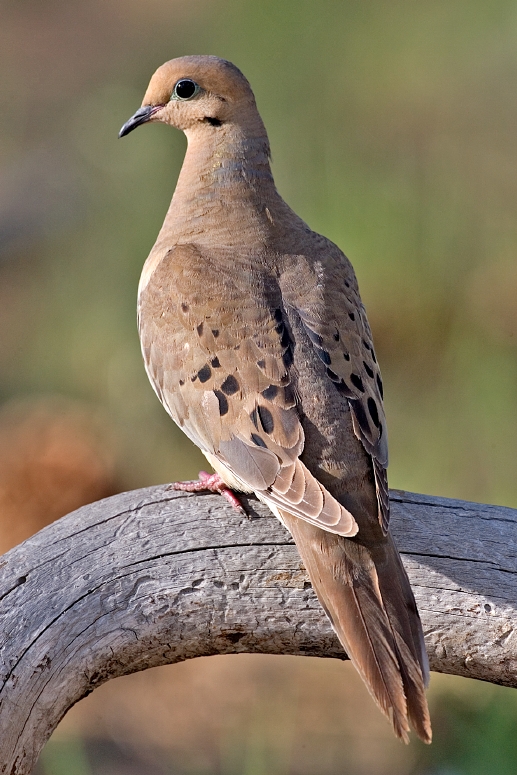When I first started learning about this project and not knowing the spelling of this species of bird, I thought that it must have been named because it was an early riser like myself. I kind of liked that idea, until I actually looked up the bird and realized it was actually 'mourning' not 'morning!' Oh well, I still think this bird is pretty neat...maybe it is more because of its adaptability to different locations.
Today's presentation was done by Katy. I was very proud of her for getting up in front of the group today. She did a great job of covering all the information.

The Cornell Lab of Ornithology states:
Doesn't that sound like a beautiful bird?
We learned today:
The Mourning Dove is from 11 to 13 inches long, with a wingspan of 17 to 19 inches. Weights range from 4.5 to 6 ounces. The small black spot on the face distinguished it from the now extinct Passenger Pigeon.
Except for wetland and dense forest, mourning doves can be found most anywhere.
Mourning Doves birds prefer open land with scattered trees and shrubs.
They are one of the most widespread and adaptable North American birds.
The male and female look a lot alike. The sex of a Mourning Dove can be determined with lots of experience. Males have a bluish crown and nape, and a rose wash to the throat and breast. The crown and nape of the female is grayish brown, and the throat and breast has a brownish or tan wash.
Nesting Habits
 A loosely built nest, built by the male, of twigs, grass, weeds and pine needles make up the nesting materials Doves use. In fact, this loose pile of twigs is so lightly put together that often you can see through it from the bottom.
A loosely built nest, built by the male, of twigs, grass, weeds and pine needles make up the nesting materials Doves use. In fact, this loose pile of twigs is so lightly put together that often you can see through it from the bottom. Nest abandonment is very common with these birds. If they feel any threat from predators whether human or animal, they may go elsewhere to nest abandoning both eggs and nestlings.
Nest abandonment is very common with these birds. If they feel any threat from predators whether human or animal, they may go elsewhere to nest abandoning both eggs and nestlings.Unlike most birds, Doves incubate their eggs continually. Since the male and female look alike, it appears the same bird is incubating the eggs the whole time. Actually, the male does a daytime shift and the female does the night shift.
The nest can be found 5-25 feet above the ground, often in the crotch of a shrub or tree. Laying 2 white eggs that are incubated for 14-15 days. The young will leave the nest in 12-14 days.
Diet
Doves, along with Pigeons, produce a food called pigeon milk (not really milk) by glands in the crop of the adult bird. The parent opens its mouth wide, permitting the nestling to stick its head inside to feed on the nutritious food.
In the wild, the adult birds feed primarily on waste grain. These include corn, wheat, grass, and weed seeds.
Lifespan
The average lifespan of first year doves is 1 - 1.5 years. First year doves have a mortality rate of 60 - 75 percent and adults have a mortality rate of 50 - 60 percent. For any songbird the first year of survival is the most difficult. Doves that survive their first year can live on average 4 - 5 years.
Management
Plants for the Contest
Annual sunflower
Croton
Hackberry
Lespedeza
Millets
Partridge Pea
Prickly Ash
Rye Grass
Smart weed
Sumac Littleleaf
Switch Grass
Vetch
Western Ragweed
We had 16 children and 7 adults in attendance.
No comments:
Post a Comment